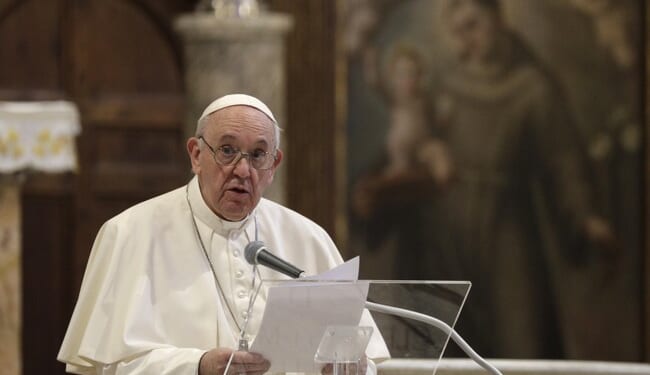
The Catholic Church is undergoing a transformation in many parts of the United States. Many Catholics, unsettled by the changes wrought by Vatican II 50 years ago and more recent ideologies like “liberation theology,” crave the familiar orthodoxy that Catholics found comfort in for hundreds of years and had largely been abandoned by the more hip, the more liberal Catholic Church of recent decades.
Associated Press is making a big deal of it, but as Ed Morrissey points out, there have been “traditional” Catholics practicing their faith all along. Despite decades of “modernization,” many Catholics adhered to a strict, traditional faith.
What the AP is surprised at is the generational changing of the guard that is seeing the older, liberal priests retiring or dying, and they’re being replaced by younger, more conservative clergy.
“They say they’re trying to restore what us old guys ruined,” said the Rev. John Forliti, 87, a retired Twin Cities priest who fought for liberal causes like civil rights and sex education.
“They’re just waiting for us to die,” said another older priest from Cleveland.
Sixty years ago when those priests were young, older priests no doubt echoed their complaints from today.
For some parishioners, the return to more traditional ways of worship is proving to be a step too far.
“I don’t want my daughter to be Catholic,” said Christine Hammond, whose family left the parish when her daughter’s school changed. “Not if this is the Roman Catholic Church that is coming.”
They often stand out in the pews, with the men in ties and the women sometimes with the lace head coverings that all but disappeared from American churches more than 50 years ago. Often, at least a couple families will arrive with four, five or even more children, signaling their adherence to the church’s ban on contraception, which most American Catholics have long casually ignored.
They attend confession regularly and adhere strictly to church teachings. Many yearn for Masses that echo with medieval traditions – more Latin, more incense more Gregorian chants.
“We want this ethereal experience that is different from everything else in our lives,” said Ben Rouleau, who until recently led St. Maria Goretti’s young adult group, which saw membership skyrocket even as the parish shrank amid the turmoil.
Many practicing Catholics are probably giggling at the AP’s surprise that some women cover their heads when they enter the Nave and some men dress in their “Sunday best” to go to church. It doesn’t necessarily signify anything except a way to address the solemnity of attending mass.
“Progressive theology” is a euphemism for liberation theology, a weird amalgam of Catholicism and Marx that came far more from the latter than the former. Marxists wrapped themselves in Catholic teachings to push la revolucion in South America and Central America, but it had significant influence here, too. That brought decades of war and misery that still are playing out, not to mention the promotion of regimes that extended Marxism to Marx’s hostility to the Church in places like Nicaragua.
However, the AP misses a better story at this point, because the seminaries are producing more conservative priests. How is that happening when Academia is rocketing to the Left and producing more Marxists than ever? In large part, it’s because “progressive theology” discredited itself over the last few decades, and its adherents nearly made the Church nothing more than a social-justice club.
That’s not why people come to worship God in the Catholic Church (and other faithful Christian churches), however. They want transcendence, not politics; they want to learn what Jesus calls us to do and how to live, not just be told we can do whatever we want. We can do that on our own and not spend an hour a week in the parish.
Indeed, there are many Catholics who prefer to be the virtue-signaling Pharisee rather than the penitent tax collector.
I’ll leave you to guess who gets into the Kingdom of Heaven.












